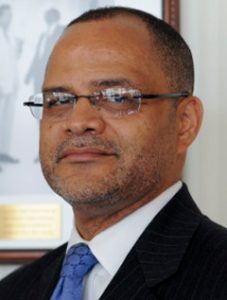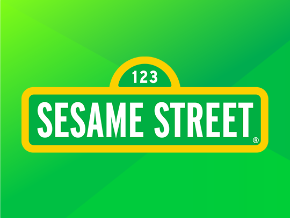Fifty years ago, America’s public school system stopped teaching children how to read.
Today, two of every three students graduating from NYC schools are not prepared for college without significant remediation and are not prepared for meaningful work.
There is nothing new about this statistic…it has been true for years. It is essentially true for most large and smaller school systems across the nation.
You could suggest that there are so many colleges that everybody can get in somewhere. But then you’d have to explain the dropout rate which is staggering…especially among boys. The numbers state from one of five to three of five dropping out.
Until very recently not much has been said about why these failures exist.
But that is changing.

Despite the fact that Banks knows that America’s school system, (including New York State) and its Schools of Education have refused to teach it, Banks said that when public schools stopped teaching reading by using phonics and phonemic awareness, schools no longer produced children who could read well.
It has often been said that if a child cannot read when he or she is in third grade, that student has been lost to education forever. While that may not be true of every single student, it is clearly true for many.
Phonics and the repetition built into that technique of teaching children how to read are the keys. As Malcolm Gladwell said “Do a thing 10,000 times and you will master it.”
Repetition is the key to learning and schools stopped teaching reading and arithmetic with repetition in the 1970s when California academics produced new techniques for teaching both. With those changes the education industry developed new text books and other devices, selling them to eager schools as the new process moved across the country like wildfire.
But the failures of these new techniques are so inclusive that young people cannot read well and cannot make change when they are dealing with money.
Clearly Banks believes the correct teaching of reading must be reintroduced into NYC public schools if there is to be any chance that NYC schools genuinely prepare graduates for further education and life skills.
But stunningly he is not alone.
Since 2018, legislatures in 21 States have mandated that teachers be taught how to teach what science has shown to be necessary – phonics and elements of phonemic awareness.
PROTECTING THE STATUS QUO
 Americas’ educators so reviled phonics as the way to teach children to read, that they banned the remarkable educational television show Sesame Street from being broadcast in public schools because the early years of Sesame Street focused so intently on helping children to read through a phonics approach.
Americas’ educators so reviled phonics as the way to teach children to read, that they banned the remarkable educational television show Sesame Street from being broadcast in public schools because the early years of Sesame Street focused so intently on helping children to read through a phonics approach.
The producers of Sesame Street came to the conclusion that they needed to stop those reading lessons if they wanted the support of the public school system. And they did.
Schools of Education stopped teaching phonics to those who would be earning their certifications in reading and elementary school teaching.
Teaching the “whole word” became the favored approach and while a teacher in NYC schools could find 20 different ways to teach reading if she knew what closet to open …not one of them would be using phonics.
After more than a decade of teaching the “whole word’, students were entering junior high school with significant reading deficits. Defensively, teachers began to simplify reading assignments. They provided students with a list of hundreds of books and told them to select those they wanted to read for book reports. When that approach failed, they told students to read anything they wanted to read. The excuse was “students read better when they are reading something they are interested in”. While that might be generally accurate, it was just another escape from the truth.
Graduating into high school, students could no longer read the masters of literature – some of the great books in the English language – and so teaching literature was gone – just like that.
 During the advent of diversity which comes every decade or so, reading teachers were told that it was no longer necessary to teach the writings and ideas of dead white men…take that Shakespeare!!!
During the advent of diversity which comes every decade or so, reading teachers were told that it was no longer necessary to teach the writings and ideas of dead white men…take that Shakespeare!!!
Rather than admit the failure of the reading approach they had adopted, America’s educators simply dumbed down the teaching of reading and writing and let the teaching of literature fade away. Who was going to complain…the students who couldn’t read or the parents who didn’t know?
And so Mr. Banks’ challenge will not only be to overcome the universal educational negation of phonics, he will first have to find teachers to teach it to teachers who teach reading to students.
But we now know that Banks is not the only one who sees the truth.
A MAJOR STEP FORWARD
It is usually a danger sign when politicians get seriously involved with the educational establishment; nothing very good happens. It was the politicians who insisted that obvious weaknesses and failure at the turn of the century could be fixed with constant testing. When that approach proved that students weren’t learning, educators began teaching to the test. The results have mattered much although it has been a decent shield against significant change and further political interference.
But now Alabama, Arkansas, Alaska, Delaware, the District of Columbia, Indiana, Kansas, Kentucky, Louisiana, Mississippi, Missouri, Nevada, North and South Carolina, North Dakota, Oklahoma, Pennsylvania, Rhode Island, Tennessee, Utah and Wyoming have said enough is enough.
Phonics is the key and it must be taught so children can learn to read.
It will take time. Here in New York, Mr. Banks will first have to convince the Teacher’s Union that changers must be made.
Across the country, Schools of Education will have to drop their prejudices and begin teaching phonics to their reading, early childhood and elementary school teachers-to-be.
It’s taken fifty years to see the light. The hope is that the light is bright enough to illuminate the necessary change.
